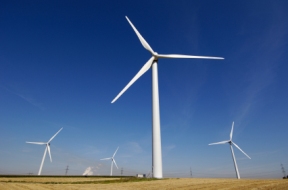
This was supposed to be a big year for energy-related technology.
It was supposed to mark the ascendance of the electric car as the first full year of sales for GM’s Volt and Nissan’s Leaf, which represent the leading edge of electric vehicles planned by major automakers. But GM fell far short of its sales goals for the year, no doubt plagued by high costs due to expensive batteries. And the company ended the year under a cloud of smoke as the Volt’s battery pack caught on fire after safety testing.
It was the year by which advanced-biofuels companies were supposed to be producing 250 million gallons of fuels from grass and wood chips to meet a U.S. federal mandate. But the EPA had to waive the mandate, decreasing the goal to just 6.6 million gallons, because no large advanced-biofuels plants were up and running. The year ended with the demise of one of the first advanced-biofuels companies, Range Fuels, which shut down operations and was forced to auction off assets.
(more…)


 Follow
Follow
